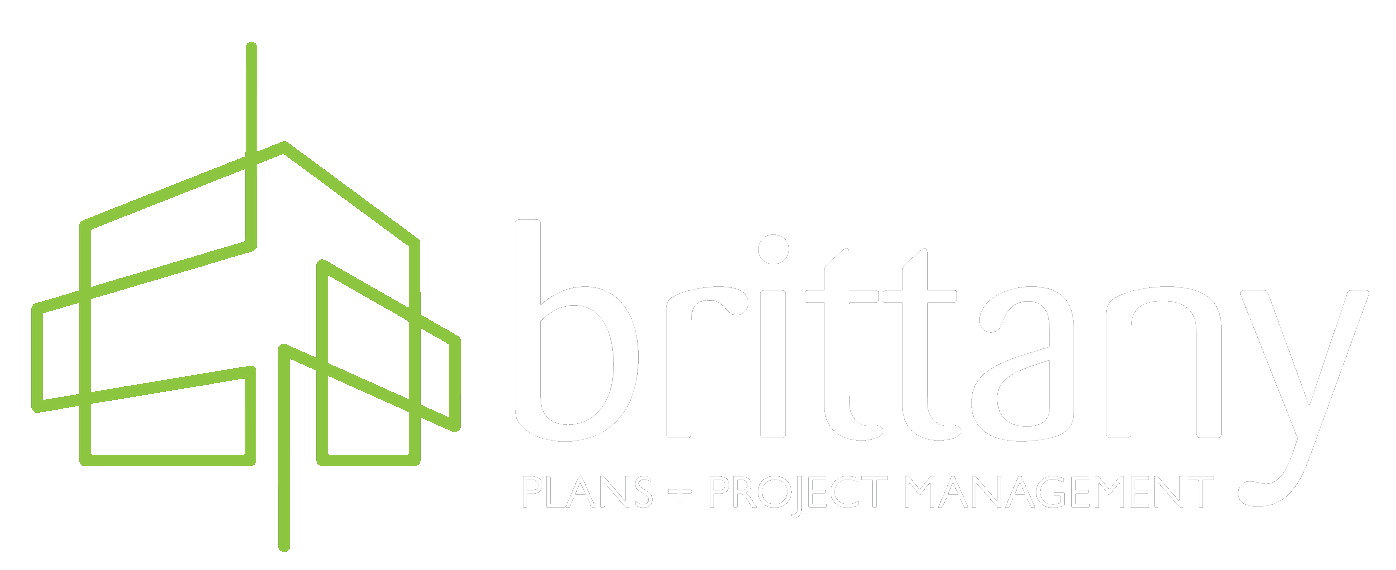Planning Process
Brittany Plans
Building Permit – For Extension
When you intend to extend your construction, whether it is your home or another facility, acquiring the proper permit is critical to complying with current requirements and conducting your project legally. In this article, we will go over each step of the process of obtaining building permit approval for an extension. Follow our step-by-step guidance from file composition to final decision-making to ensure that your expansion project is completely compliant.
- When considering a building addition, whether a house extension, façade extension or roof extension, it is critical to go through a rigorous process to secure the appropriate permissions. The process begins with the creation of detailed expansion plans, which include the extension plan, extension section, and extension ground plan. These plans show your concept for constructing an extension to your existing property.
- When expanding a building, there are a range of factors to consider. The expansion taxable area and extension floor space are critical metrics to guarantee that your project meets local and national building codes. These measures also decide whether your project requires prior authorization or can be regularised without it.
- Extension authorization is a critical step. To add an expansion to your property, you must file a request to the town hall. This request may also be necessary for a house extension, whether it be a facade, roof, or footprint extension. Municipal officials will examine your plans and paperwork to see whether your project complies with local planning and construction standards.
- However, your request for an extended authorization may be first denied. Do not be upset if you’re turned down. You have the option to file an informal or administrative appeal. This appeal allows you to provide arguments in support of your project, as well as to provide clarifications or adjustments in response to concerns highlighted by authorities. In some circumstances, conversations and negotiations can be used to discover common ground and regularise your project.
- However, failing to comply with regulations and permissions can result in harsh penalties. These sanctions could include fines, demolition orders, and other legal ramifications. It is strongly advised that you follow the right procedures and engage with qualified specialists such as architects. Our construction specialists will ensure that your extension project is completed in accordance with all applicable regulations.
- When it comes to growth, two sorts of authorizations are frequently used: the building permit and the declaration of works. Local and regional authorities give these two authorizations to regulate construction and expansion projects based on their nature and size. Here is the difference between a building permit and a declaration of works, as well as the construction thresholds that decide whether sort of licence is required.
Building permit:
- Planning approval is a broader licence that is typically necessary for larger building projects such as new builds, major extensions, or considerable changes to existing structures. Key features of planning permission are:
- Construction thresholds: Building permits are typically required for expansion projects that exceed specified areas. These limits may differ based on local legislation, although they are commonly established for additions of more than 20 to 40 square metres or when the total building area surpasses a particular amount.
- Instruction Time: Obtaining a building permit is a more detailed and time-consuming process than filing a declaration of works. It may entail impact assessments, comprehensive architectural plans, and the opinions of various stakeholders, such as town planning authorities, fire safety, etc.
- Decision: After the materials are submitted, local authorities analyse the plans and documentation to determine whether the project complies with applicable rules and regulations. The decision to approve or deny is then made.
Declaration of Works:
- The ‘’declaration of works’’ is a less restrictive method that is typically utilised for minor expansion projects. The following are the primary characteristics of the work declaration:
- Construction thresholds: The works declaration applies to construction projects that fall below the thresholds required for a building permit. These criteria can vary depending on local rules, although they are typically set for additions of less than 20 to 40 square metres.
- Instruction time: The declaration of works is a shorter and simpler process than the building permit. Authorities have a deadline to issue a decision, and in the lack of a response by the date, the declaration is deemed approved.
- Decision: Unlike the building permit, the declaration of works is often a notification rather than a request for permission. If the local authorities do not object within the allotted time, you may continue your job.
Complete Composition of the File for Enlargement:
The documents required to create a full file to submit to the town hall vary depending on the type of expansion project and the local legislation in effect. However, below is a general list of elements typically necessary for a construction authorization application file, such as the building permit or the works declaration:
- Application Form: The first step is to complete the proper application form. This form may change depending on local legislation and the nature of the project. Make sure to use the form that is unique to your project.
- Site Map: This map depicts the exact location of your site in respect to nearby roadways, property borders, and buildings. It must also provide geographic coordinates (latitude and longitude).
- Ground Plan: This plan depicts the overall layout of your project, including the position of development in respect to existing buildings, property lines, access routes, and so on.
- Extension plans: These drawings depict the intricacies of the construction. They must be to scale, with precise proportions, wall heights, apertures, roofs, and so on.
- Sections and Elevations: These plans depict the construction’s vertical sections and elevations, as well as how the project will fit into its surroundings and design features.
- Descriptive Notice: This extensive description of your project highlights its features, purpose, materials utilised, and the Interior and external fittings, as well as any construction-related details.
- Photographs: Images of the present location and adjacent structures might assist authorities in determining the potential impact of your proposal on the landscape.
- Effect study: For larger projects, an environmental effect study may be necessary. This is determined by local restrictions as well as project size.
- Attestations and certificates: You may be required to give attestations or certificates, such as proof of conformity with energy standards (RT 2012 in France), insurance certificates, and so on.
- Cadastral plan: This plan, supplied by the tax administration, depicts your property’s boundaries and cadastral references.
Professionals and stakeholders.
Several professions might play an important role in acquiring an expansion permit. Their knowledge helps with the design, regulatory compliance, and effective execution of your project. The following are the primary professionals involved and their roles in this process.
- Architect: An architect is vital for designing your expansion project. Their responsibilities include developing precise plans and drawings for the project, ensuring that the design is functional, visually acceptable, and adheres to current building and planning guidelines. The architect must also guarantee that the project integrates seamlessly into the current surroundings and meets your requirements.
- A Structural Engineer designs the project’s structural elements, such as foundations, beams, columns, and load-bearing walls. They guarantee that the structure is sturdy, safe, and capable of supporting the loads specified in the expansion project.
- Thermal Engineer: Also known as an energy efficiency expert, this engineer designs heating, ventilation, and air conditioning (HVAC) systems as well as methods to improve the building’s energy efficiency. Their work is critical in ensuring that the project meets energy performance criteria and reduces its carbon footprint.
- Surveyor-Expert: The surveyor-expert conducts topographic surveys and creates detailed designs for the existing piece of land. These blueprints are frequently needed to determine the existing layout of the site assist in project design.
- Construction Lawyer: In some circumstances, consulting a construction lawyer can help you navigate the legal parts of the process. They can assist you in understanding rules, drafting contracts, and providing legal advice on project-related matters.
- Environmental Specialists: For larger projects, environmental specialists may be required to examine potential environmental implications and offer mitigation strategies. They can assist with the preparation of environmental impact assessments if necessary.
- A design office can give detailed technical help, including analyses and recommendations based on technical and regulatory criteria.
Frequently Asked Questions About Expansion
How long does it take to get an expansion permit?
- The timeline varies depending on several aspects, including the project’s complexity, the workload of local authorities, and the restrictions in your area. In general, a declaration of works can take one to three months, whereas a building permit can take two to six months (or more).
What are the fees connected with submitting an application for expansion authorization?
- Costs are also varied and are determined by the scale of the project, the fees of the professionals involved (architects, engineers, and so on), and administrative expenses. Consider the expenditures of design, permit applications, and possible environmental or impact studies.
Do I need to hire an architect for my expansion project?
- In most circumstances, engaging an architect is advisable, although not always essential. Architects specialise in design, regulation, and cooperation with other professionals. They can also assist in developing comprehensive blueprints and ensuring compliance with local regulations.
Can I begin the work before receiving permission?
- It is strongly advised not to begin work before acquiring the necessary authorization. Undertaking work without permission may result in fines, legal punishments, and even the requirement to destroy what has been erected.
Can I change my project once authorization has been granted?
- Minor adjustments may be permissible, but major changes may necessitate a change request to the relevant authorities. To ensure compliance, disclose any planned changes to your architect and the authorities.
What will happen if my request is denied?
- If your request is denied, you may obtain an explanation of the grounds for the refusal. In some circumstances, revisions or modifications to the project may be required to accommodate the authorities’ concerns. You may also have the option to appeal the decision.
Do I require expansion authorization for all sorts of projects?
- Permitting requirements vary according on the size and type of the project. Minor expansions or specific changes instead of obtaining planning permission, you may be qualified for a declaration of works. Check your area’s building thresholds to see what types of permits are required.
Can I request retroactive authorization for previously completed work?
- In certain instances, you may be able to regularise already completed work by requesting retroactive authorization. However, this can be more complicated and costly. It is recommended to always acquire permission before beginning work.
- It is crucial to note that the answers provided above are basic principles; specifics may differ based on your area and local legislation. Consult local authorities or professionals for project-specific advice.
Compliance and Sanctions:
Consequences of Noncompliance:
- Fines and penalties: Non-compliance may result in severe fines. Authorities may apply financial penalties that are proportionate to the seriousness of the infraction.
Demolition Orders:
- If you do not get the requisite approvals, the authorities may order that you demolish or restore the place to its original condition. This can lead to significant costs, as well as wasted time and effort.
Court Disputes:
- Neighbours and other affected parties may sue you for noncompliance, resulting in expensive and time-consuming court proceedings.
Resale Difficulties:
- Poor construction can reduce the value of your house and make resale more difficult, as potential purchasers may be hesitant to invest in a property with legal problems.
Impact on Insurance:
- Your house insurance policy may not cover damage or accidents caused by unauthorised or non-compliant building.
File Submission:
- Where to Submit: The project’s local municipality’s Local Marie’s Office is where the file needs to be submitted. It might be feasible to make your dossier file submission electronically in some cities.
- You should ask Local Marie’s Office or its website for information on how to send your file to it via the internet.
- Acknowledgment of Receipt: Request an acknowledgment of receipt upon filing, which verifies the filing date and attests to the file’s filing status.
Conclusion:
Homeowners are increasingly drawn to house extensions as they offer living space and add value to their properties. These expansions bring benefits like customisation options, increased property value, additional living areas, addressing changing needs, and serving as an alternative to buying or relocating homes. If you are looking for a space that’s customised to your liking or want to enhance the value of your property without the inconvenience of moving, then a well-designed and skilfully executed home extension might be just what you need.
Although the information provided within these guidelines are compiled to assist, we would always recommend speaking to your Local Maries Office, to determine any specific local requirements that will be specifically applicable to your application.
In case of any doubt or questions, your local Maries Office / Planning services are there to help you. They can provide invaluable advice and information specific to your local area.
You should ask Local Marie’s Office or its website for information on how to send your file to it via the internet.


